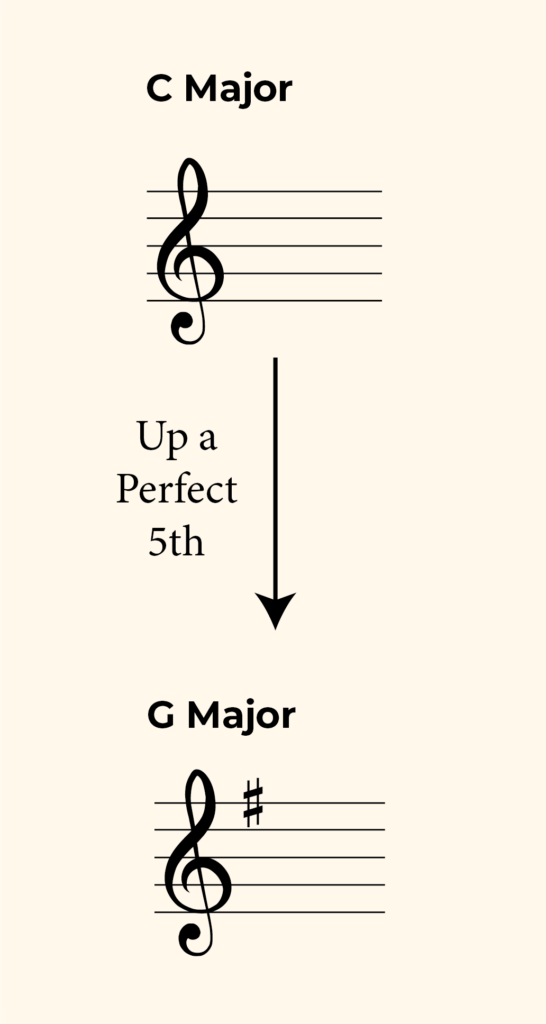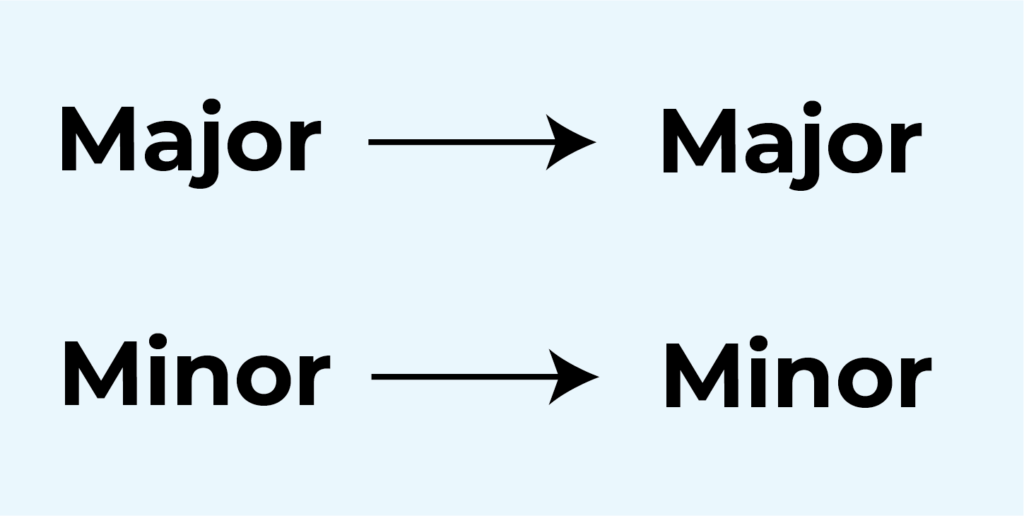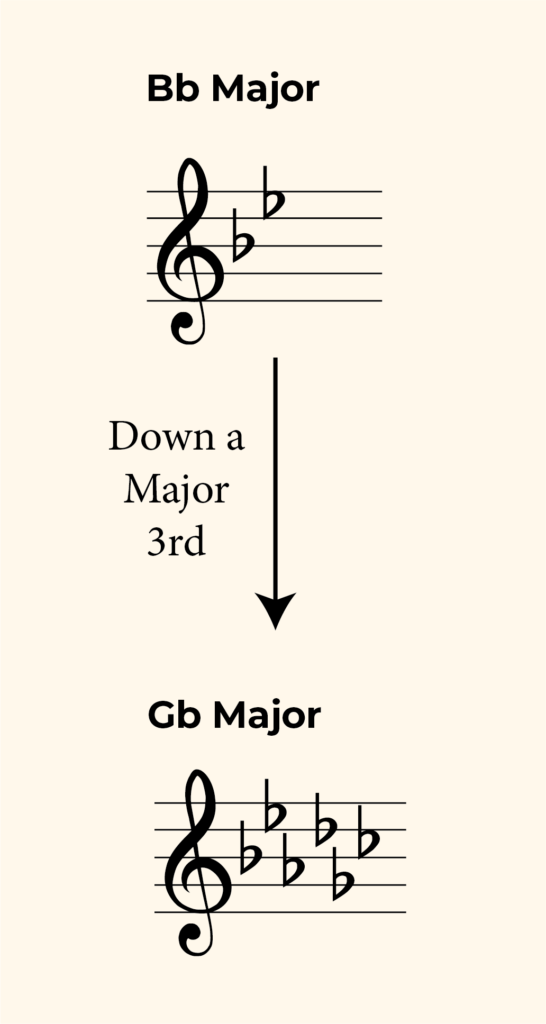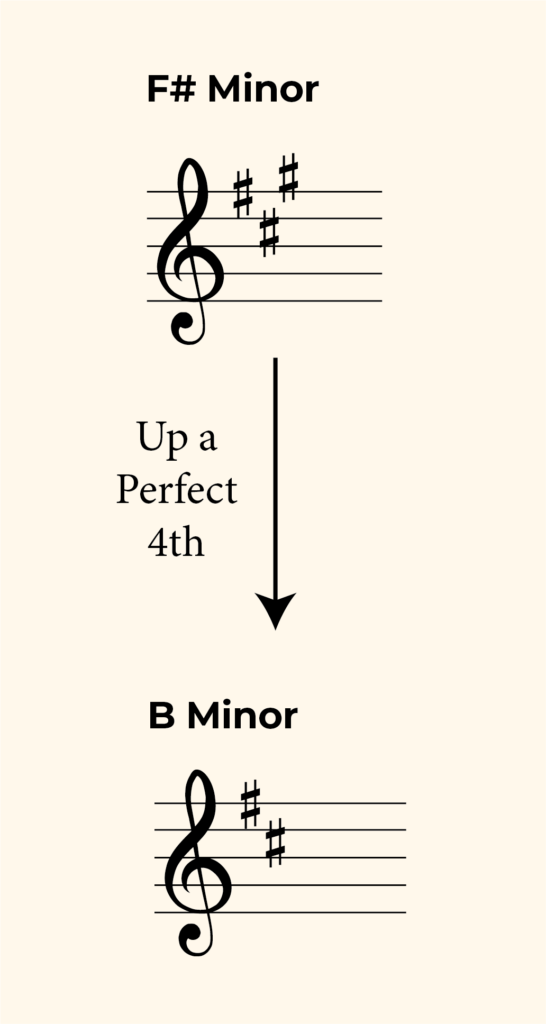Transposition is a great skill to have for any musician. It allows you to play pieces written for different instruments and put together ensembles. Ultimately it also deepens your understanding of intervals, scales and key signatures.
In this post we we’ll focus on how to transpose key signatures, which is part of the whole transposition process. Here is our full guide to transposition if you need more detail.
Music transposition: A Quick Definition
Transposition, put simply, is changing the key of a piece of music. Transposition allows us to re-write a piece of music up or down in pitch whilst keeping the effect of the piece the same. The rhythm and the intervals between the notes will sound exactly the same but the pitch will be higher or lower depending on how we transpose it!
We sometimes see instruments referred to as ‘in the key of’. When an instrument is in the key of Bb or Eb this simply means that when the relevant instrument plays a C, the sounding pitch will be a Bb or an Eb!
Any instrument that has a different sounding pitch to written pitch is a transposing instrument.
Instruments that do not have a different sounding pitch to written pitch are referred to as being in concert pitch.
We Need Intervals!
Before we look at how to transpose key signatures, it is important to say that you need to understand intervals (in a basic sense) to do this. If you need to brush up on this, then check out our intervals guide for beginners.
Transpose Key Signature: Step-by-Step
To transpose a key signature, we first need to know the interval we are transposing by. Let’s use a perfect the 5th for now.
If we start with a C Major key signature, we would move up to G Major, which has an F# in it.

It is worth noting that we don’t really need to know that we are in C Major. All we need to know is that we need to find a perfect 5th above C.
We can use the Major or Minor scale to work out a perfect 5th or we could count up in half-steps (a perfect 5th is equal to 7 half-steps or semitones)
Major = Major and Minor = Minor
If you are transposing from a Major key then you will always end up in another major key. This is true even if you are transposing up a Minor 3rd.

This is because you would need to rewrite a piece in order to change it from sounding in a major key to sounding in a minor key.
If we transpose up a Minor 3rd, this ‘minor 3rd’ label only refers to the distance we are moving the notes a not to the key of the piece itself.
Transpose the Key Signature -Example 2
Let’s start with an Bb Major Key signature and transpose it down a Major 3rd.
So what is a Major 3rd below Bb? G is a 3rd below Bb, but G-Bb is not a Major 3rd. Therefore we need to look at Gb. Gb major has six flats, and its 3rd is Ab.
This makes our new key Gb major.

Transpose the Key Signature in a Minor Key
Now let’s try a minor example. What is we start with F# Minor, which has three sharps, and we transpose it up Perfect 4th. We need to find a perfect 4th above F#.
As perfect intervals are the same in both major and minor scale, we could use either to work it out. I’m going to use the minor scale.
F#, G#, A, B. So we are in B Minor, which has 2 sharps.

What is interesting is that if we pretend out F# Minor piece is in the relative Major (A Major) then the transposition works the same.
As you can see below, F# Minor and A Major share the same key signature as they are relative keys.

Why Should We Transpose Key Signatures?
To understand why we need to transpose key signatures we need to compare two popular methods fro transposition. I’ll show you why the first one is limiting and why the second method is the one to learn!
And, you guess it, the second one requires you to transpose key signatures.
1. Single-Note Transposition
This is where we move each note up the require interval, one at a time. Here is melody in below and we are going to transpose it up a Major 6th.

We can move each note up a Major 6th (or up 5 notes as be count the note we start on). The Major 6th interval is 9 half-steps (or semitones) so you could move them this way.
Our first note is F# and the 6th note in F# major is D#, so we write a D#. Next we have an E natural. The 6th note in E Major is C#, so the 2nd note in our transposed melody is C#. And so on…

Now we have our new melody complete with accidentals. The problem with this method is that we don’t know what key we are in and so we have no key signature.
You might think that we are in A major, as the melody has three sharps but we are actually in B major.

A further problem with this method is that it is extremely slow and students often make small errors along the way.
Introducing method 2: this is where transposing the key signature comes in really useful.
2. Transposing the Key Signature
For this method we will first move all the notes up our required interval. We used a Major 6th before so let’s use the same interval here.
So our notes will all move up a 6th (or 5 notes up as we include the note we start on in an interval).
Here is our original melody.

And here it is with the notes moved up a 6th. We have not done anything with the key signature yet, so our transposition is not complete.

Now we need to transpose the key signature up a Major 6th as well. A major 6th interval above D is B natural, so we are in B major, which has 5 sharps. Below is the completed transposition.

The final step would be to deal with any notes in the original melody that fall outside the original key (D Major). We didn’t have any in the example above, so the transposition is complete.
If you have accidentals outside the original key, the best way to deal with them is move them up using method 1 (counting up a Major 6th from the note).
Using computer software
A far quicker method of transposition is to use software to do it for you! Apps like Musescore, Sibelius and Finale will transpose whole pieces with the press of a few buttons. You can then export, print and share your new transposed sheet music.
What’s next…?
- See all our guides for transposition.
- Learn how to transpose by a perfect 5th.
